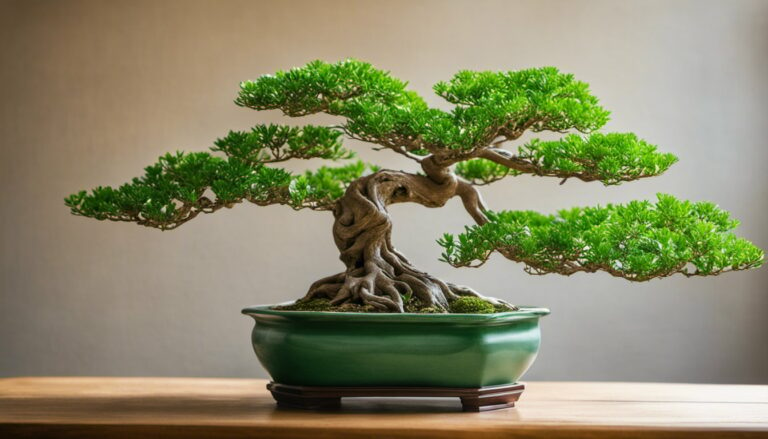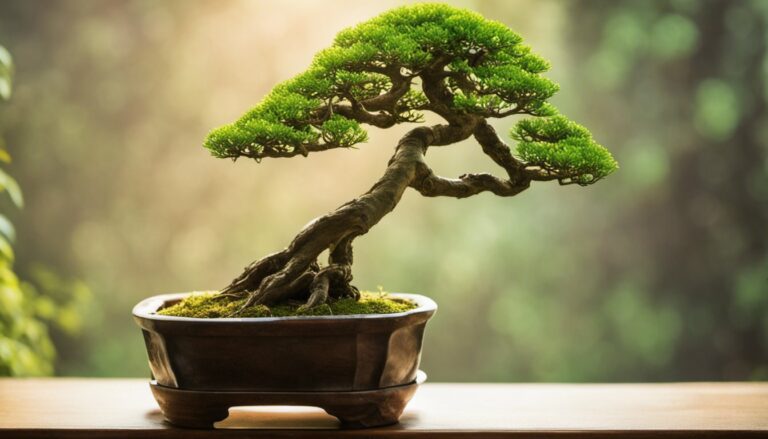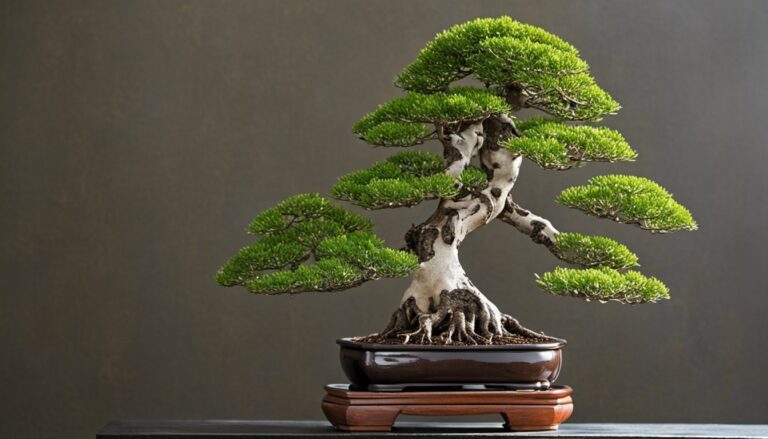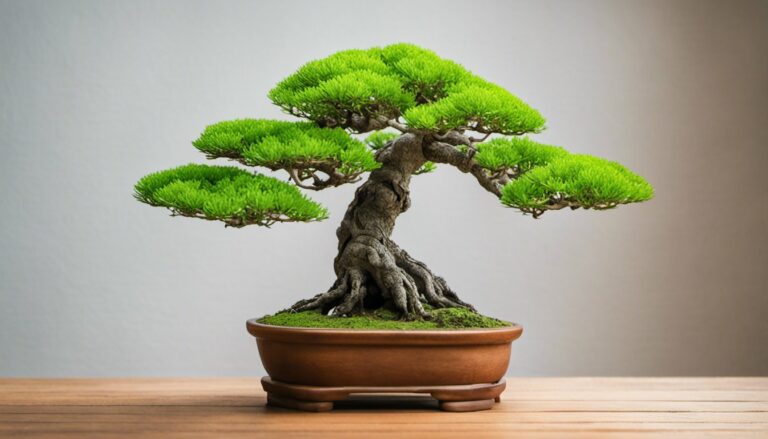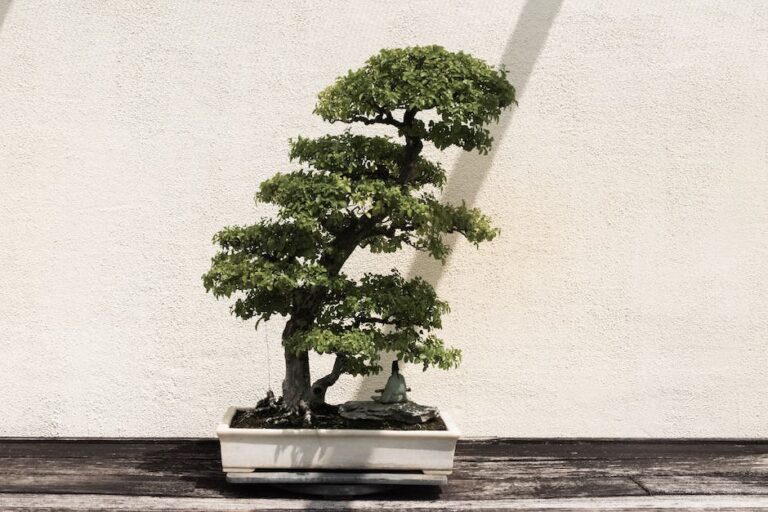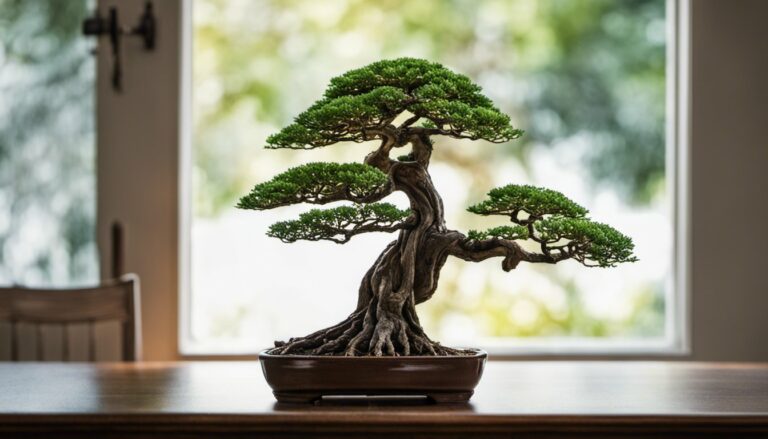How Does A Tree Become A Bonsai
Have you ever wondered how a towering oak or a majestic pine can be transformed into a 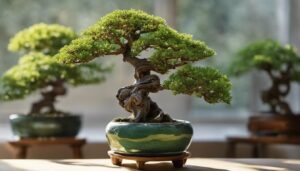 miniature work of art? In the world of bonsai, this transformation is not only possible but also highly revered.
miniature work of art? In the world of bonsai, this transformation is not only possible but also highly revered.
Imagine a humble sapling, carefully pruned and shaped over years, until it becomes a living masterpiece, capturing the essence of nature in a single, compact form.
This article will take you on a journey through the intricate process of turning a simple tree into a captivating bonsai, exploring the history, techniques, and care required along the way.
Key Takeaways
- Bonsai originated in China and was later introduced to Japan.
- Bonsai evolved from representing miniature landscapes to becoming a standalone art form.
- Choosing the right tree is crucial and determines the overall appearance and style of the bonsai.
- Techniques such as pruning, shaping, potting, and repotting are essential for maintaining and caring for bonsai trees.
The Art of Bonsai: History and Origins
The art of bonsai has a rich history and fascinating origins. Bonsai, which means ‘tray planting’ in Japanese, originated in China over a thousand years ago. It was later introduced to Japan, where it gained significant popularity and became deeply intertwined with Japanese culture.
The history of bonsai is rooted in the ancient practice of bringing nature into miniature form. It was initially practiced by Chinese scholars who created miniature landscapes in trays to represent the vastness of the natural world. Over time, bonsai evolved into a standalone art form, with its techniques and aesthetics becoming more refined.
Today, bonsai is not only admired for its beauty but also holds cultural significance, symbolizing harmony, balance, and the connection between humans and nature. The history and cultural significance of bonsai make it a truly captivating and meaningful art form to explore.
Choosing the Right Tree for Bonsai
To choose the right tree for your bonsai, start by considering the size and shape you desire. Bonsai aesthetics play a crucial role in tree selection as different species have different characteristics and growth patterns. A visual representation of the factors to consider when choosing a bonsai tree is provided in the table below:
| Size | Shape | Species |
|---|---|---|
| Small | Upright | Juniper |
| Medium | Cascade | Pine |
| Large | Informal upright | Maple |
| Extra small | Formal upright | Elm |
| Extra large | Semi-cascade | Oak |
Choosing the right tree is essential as it will determine the overall appearance and style of your bonsai. Consider the size of your available space, as well as the desired shape and species. By carefully selecting a tree that meets your preferences, you can create a beautiful and harmonious bonsai that reflects your personal taste.
Techniques for Pruning and Shaping Bonsai Trees
Pruning and shaping techniques play a crucial role in creating the desired appearance and style of bonsai trees.
When it comes to pruning techniques, there are a few key methods to keep in mind. One popular technique is called ‘pinching,’ which involves using your fingers to remove new growth from the tips of branches. This helps maintain the overall shape and size of the bonsai tree.
Another technique is called ‘leaf pruning,’ where you selectively remove leaves to create a more balanced and aesthetically pleasing look.
As for shaping methods, wiring is commonly used. By carefully wrapping wire around branches, you can guide their growth and create the desired shape. It’s important to be gentle and not apply too much pressure, as this can damage the tree.
Overall, mastering pruning and shaping techniques is essential for maintaining the beauty and artistry of bonsai trees.
The Importance of Potting and Repotting in Bonsai
Potting and repotting are crucial steps in the care and maintenance of bonsai trees. Proper potting techniques ensure that the tree has adequate drainage and room for root development, while repotting allows for the replenishment of nutrients and prevents the tree from becoming root-bound. The frequency of repotting depends on the age and growth rate of the tree. Younger trees with faster growth rates may need to be repotted every one to two years, while older trees may only require repotting every three to five years. It is important to choose the right potting mix, which typically consists of a combination of organic and inorganic materials to provide both moisture retention and good drainage. Additionally, when repotting, it is essential to prune the roots to maintain the tree’s overall health and balance.
Table:
| Potting Techniques | Repotting Frequency |
|---|---|
| Choose proper potting mix | Young trees: 1-2 years |
| Provide adequate drainage | Older trees: 3-5 years |
| Allow room for root development | Depends on growth rate |
| Prune roots during repotting | |
| Maintain overall health and balance |
Maintaining and Caring for Bonsai Trees: Tips and Tricks
When caring for your bonsai, make sure to regularly check the soil moisture to ensure the tree is not under or over-watered. This is crucial for the health and vitality of your bonsai tree.
Here are some tips and tricks to help you maintain and care for your bonsai:
- Fertilizing techniques: Bonsai trees require regular fertilization to provide them with essential nutrients. Use a balanced, slow-release fertilizer specifically designed for bonsai. Apply the fertilizer according to the instructions on the package, usually once a month during the growing season.
- Preventing diseases and pests: Keep a close eye on your bonsai tree for any signs of pests or diseases. Common pests include aphids, spider mites, and scale insects. Treat any infestations promptly using appropriate insecticides or horticultural oils. Additionally, ensure good air circulation around your bonsai and avoid overwatering to prevent fungal diseases.
Conclusion
Congratulations! You’re now equipped with the knowledge and skills to embark on the captivating journey of bonsai cultivation.
Like a master sculptor, you’ve learned to prune and shape your bonsai tree, creating a living work of art.
Just as a potter carefully chooses the perfect clay, you’ve selected the ideal tree for your bonsai endeavor.
With proper care and regular repotting, your bonsai will continue to flourish and evolve, much like a well-tended garden.
So go forth, and let your creativity blossom with the ancient art of bonsai.


